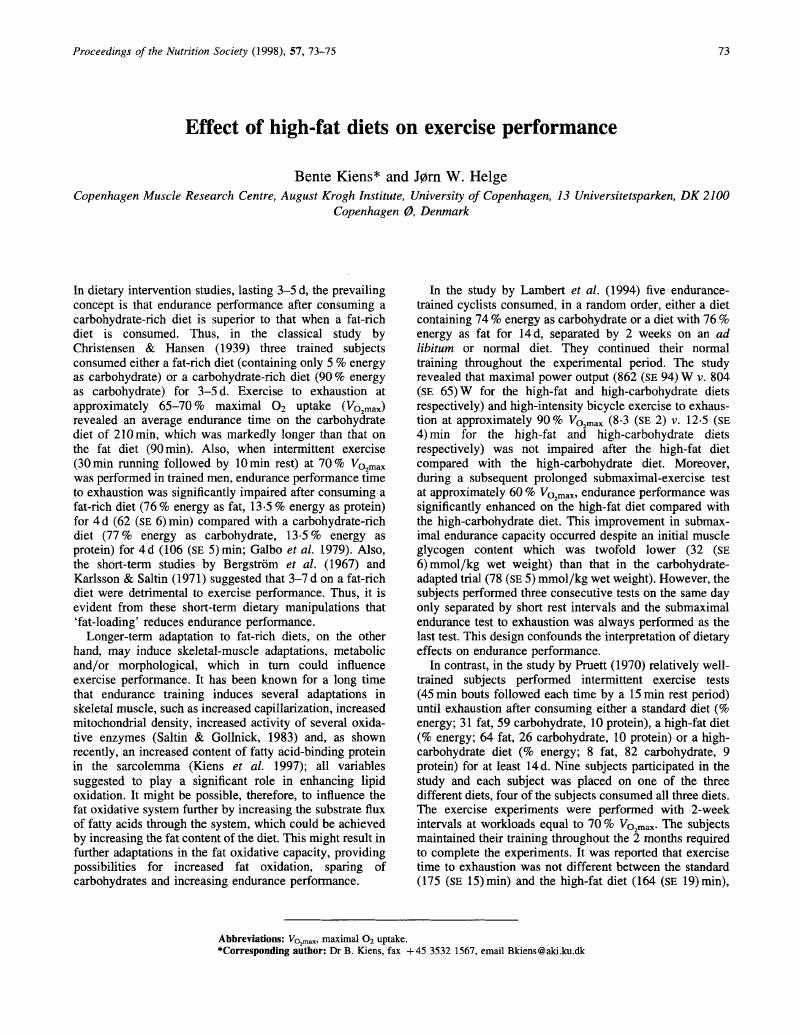Crossref Citations
This article has been cited by the following publications. This list is generated based on data provided by Crossref.
Antipatis, Christos
Ashworth, Cheryl J.
Grant, George
Lea, Richard G.
Hay, Susan M.
and
Rees, William D.
1998.
Effects of maternal vitamin A status on fetal heart and lung: changes in expression of key developmental genes.
American Journal of Physiology-Lung Cellular and Molecular Physiology,
Vol. 275,
Issue. 6,
p.
L1184.
Jeukendrup, Asker E.
1999.
Dietary fat and physical performance.
Current Opinion in Clinical Nutrition and Metabolic Care,
Vol. 2,
Issue. 6,
p.
521.
Maughan, Ron
2002.
The athlete’s diet: nutritional goals and dietary strategies.
Proceedings of the Nutrition Society,
Vol. 61,
Issue. 1,
p.
87.
Maughan, Ron
2002.
Sports nutrition: an overview.
Hospital Medicine,
Vol. 63,
Issue. 3,
p.
136.
2004.
Inulin-Type Fructans.
Vol. 20041133,
Issue. ,
Maughan, R.J.
2005.
Encyclopedia of Human Nutrition.
p.
162.
Maughan, R.J.
2005.
Encyclopedia of Human Nutrition.
p.
167.
Thorburn, Megan S.
Vistisen, Bodil
Thorp, Rhys M.
Rockell, Mike J.
Jeukendrup, Asker E.
Xu, Xuebing
and
Rowlands, David S.
2006.
Attenuated gastric distress but no benefit to performance with adaptation to octanoate-rich esterified oils in well-trained male cyclists.
Journal of Applied Physiology,
Vol. 101,
Issue. 6,
p.
1733.
Thorburn, Megan S.
Vistisen, Bodil
Thorp, Rhys M.
Rockell, Mike J.
Jeukendrup, Asker E.
Xu, Xuebing
and
Rowlands, David S.
2007.
No attenuation of gastric distress or benefit to performance with adaptation to octanoate‐rich esterified oils in female cyclists.
European Journal of Sport Science,
Vol. 7,
Issue. 4,
p.
179.
Seiquer, Isabel
Mesías, Marta
Muñoz Hoyos, Antonio
Galdó, Gabriel
and
Navarro, Maria Pilar
2008.
A Mediterranean Dietary Style Improves Calcium Utilization in Healthy Male Adolescents.
Journal of the American College of Nutrition,
Vol. 27,
Issue. 4,
p.
454.
El-Merhie, Natalia
Sabry, Ismail
and
Balbaa, Mahmoud
2012.
Effect of calcium treatment on blood parameters, gonadal development and the structure of bone in immature female rats.
Journal of Physiology and Biochemistry,
Vol. 68,
Issue. 2,
p.
219.
Migliaccio, Vincenzo
Di Gregorio, Ilaria
Putti, Rosalba
and
Lionetti, Lillà
2019.
Mitochondrial Involvement in the Adaptive Response to Chronic Exposure to Environmental Pollutants and High-Fat Feeding in a Rat Liver and Testis.
Cells,
Vol. 8,
Issue. 8,
p.
834.
Fritzen, Andreas Mæchel
Lundsgaard, Anne-Marie
and
Kiens, Bente
2019.
Dietary Fuels in Athletic Performance.
Annual Review of Nutrition,
Vol. 39,
Issue. 1,
p.
45.
Lee, Hyun Suk
and
Lee, Junga
2021.
Influences of Ketogenic Diet on Body Fat Percentage, Respiratory Exchange Rate, and Total Cholesterol in Athletes: A Systematic Review and Meta-Analysis.
International Journal of Environmental Research and Public Health,
Vol. 18,
Issue. 6,
p.
2912.



